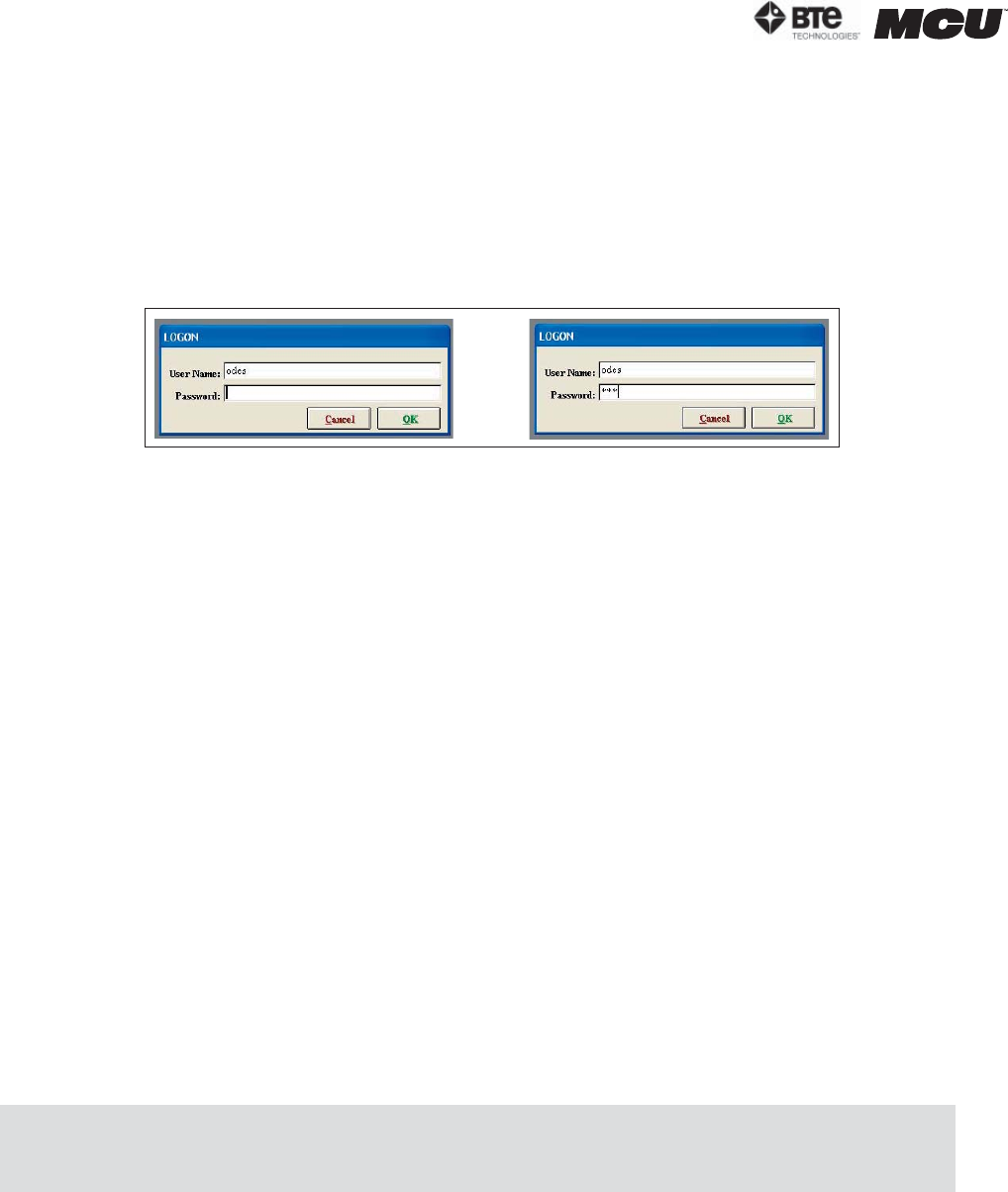User's Manual Part 1

page
4
section 02
40040005 rev. 000
B. USING THE ODES SOFTWARE
Once you are comfortable with Windows XP, take some time to familiarize yourself with the
general layout and functioning of the ODES software. Doing this now will maximize your ef-
ficiency down the line.
To access ODES, click on the ODES icon, which is displayed on the computer’s desktop. You
will be prompted for a username and password (Figure 2-3). The username is odes and the
password is bte (both lower case); the username and password may be modified through
the Administration Menu if you choose to do so later.
Upon entering ODES, you will notice the following elements are used throughout:
Title Bar – The narrow blue strip located at the top of the screen which displays the data-
base into which the data is being stored.
Taskbar – Located at the top of the screen under the title bar; while in the home screen,
this bar includes the menus: File, Calibration, Statistics, Snapshots, Forms, Utilities, Cal-
culators, Digital Capture, Patient Standing and Sitting icons, and Help. This bar changes
depending on which area of the software you are using.
Taskbar items – Items listed under each menu title which allow you to perform an opera-
tion or to pull up a report.
Text fields – Text and numerical values are entered into “fields”. To enter text or an in-
teger into a field, click the field, and a blinking black cursor will indicate that the field is
active. Type in the required information.
Check boxes – A checkbox is like a switch; click one to activate a setting and click it again
to de-activate the setting.
Drop-down menu – A text field with an arrowhead pointing down. When the arrowhead is
clicked, the menu drops down to show a list of options available.
III. HOME (START-UP) SCREEN
The first active screen you will see when the ODES program is initiated is the Home Screen (Fig-
ure 2-4). From this screen, all of the settings, patient information, and protocols may be ac-
cessed.
Figure 2-3. ODES Username and Password
Note that the sections on Self Reports, ROM Tests, Strength Tests, and Exercise Program are
covered in this manual; however, these sections are also comprehensively covered in the train-
ing program on The Melbourne Protocol. Refer to Section 10 for more information on this training
program.










